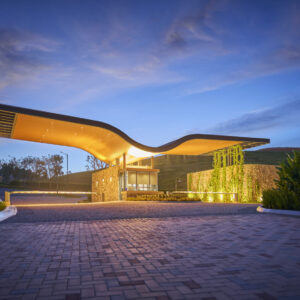In the realm of commercial architecture, Modern office building stand as testament to the evolving needs and aspirations of contemporary businesses. These structures go beyond traditional notions of office spaces, embodying a blend of functionality, aesthetics, and sustainability that define the workplace of the future.
Designing for Efficiency and Sustainability
Modern office buildings prioritize efficiency and sustainability in their design and construction. From state-of-the-art HVAC systems to energy-efficient lighting and green building materials, every aspect is meticulously planned to minimize environmental impact and operational costs. Such sustainable practices not only contribute to a healthier planet but also bolster the economic viability of businesses in the long term.
Adapting to Changing Work Dynamics
Flexibility is a hallmark of modern office buildings. Agile floor plans, modular furniture, and versatile communal spaces cater to diverse work styles and foster collaboration among teams. These adaptable environments empower employees to choose how and where they work, promoting creativity and productivity throughout the organization.
Integrating Technology for Seamless Operations
Technology is seamlessly integrated into the fabric of modern office buildings. High-speed internet, smart building management systems, and IoT-enabled devices streamline operations and enhance user experience. These advancements not only optimize energy consumption but also provide real-time data insights that inform strategic decision-making.
Enhancing Employee Well-being and Satisfaction
Central to the design philosophy of modern office buildings is the well-being of employees. Natural light-filled interiors, ergonomic workstations, and wellness amenities such as fitness centers and relaxation areas create a supportive environment that nurtures both physical and mental health. Such spaces contribute to higher job satisfaction, lower absenteeism, and increased employee retention rates.
Driving Business Success and Competitive Advantage
Modern office buildings play a pivotal role in driving business success. They serve as a tangible representation of corporate identity and values, influencing brand perception among clients, partners, and stakeholders. Moreover, these buildings serve as magnets for top talent, offering an inspiring work environment that attracts skilled professionals and fuels organizational growth.
Conclusion
The evolution of modern office buildings reflects a paradigm shift in how we perceive and utilize commercial spaces. By embracing innovation, sustainability, flexibility, and employee-centric design, these structures redefine the workplace experience. As businesses continue to evolve in a rapidly changing global landscape, the importance of investing in modern office buildings as strategic assets cannot be overstated. They not only support operational efficiency and cost-effectiveness but also inspire creativity, collaboration, and well-being among those who inhabit them. In essence, office building construction is not just physical structures; they are catalysts for organizational excellence and a testament to forward-thinking design principles in the modern era.

